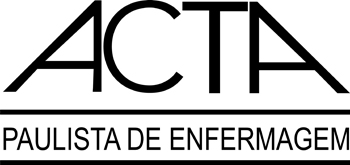By Isabelle Arruda Barbosa, PhD in Health Sciences, Universidade Estadual de Montes Claros, Montes Claros, MG, Brazil
The study “Prevalence and factors associated with excess body weight in adolescents”, published in Acta Paulista de Enfermagem (vol. 32, no. 5) analyzed prevalence and associated factors with excess body weight in adolescents, and reported excess body weight in 32.8% of participants. Factors were related with family history of dyslipidemia and alcohol consumption. Behavioral and eating habits were also inadequate, however, without significant association.
This was a cross-sectional study including adolescents from both sexes with mean age of 13.8 years. We collected health information by self-report. Participants underwent laboratorial exams.
Among factors that favored excess body weight, behavioral factors were more prominent than biological factors. For this reason, life style was considered a determining factor of health condition (WADDEN; BROWNELL; FOSTER, 2002), as well as family, social and education environment (REILLY, 2005).
The published literature describes that adolescent with family members with history of high cholesterol and/or coronary heart disease (men aged <55 or women aged <65 years), and adolescents presenting, among others, hypertension, diabetes, obesity or atherosclerotic disease, are candidates for family hypercholesterolemia screening, as a preventive manners for atherosclerosis (BRASIL, 2018). For this reason, attention is justified for lipid profile of adolescents and their families.
Alcohol consumption is also a concern among adolescents, considering that they are in a phase of body transformation and definition of social identity. Therefore, alcohol consumption, even in small amounts, in addition of being highly caloric, can affect adolescents’ health.
On the other hand, lipid profile, exercise, candy and ultra-processed food intake were not associated with overweight adolescents, as expected.
In this sense, because nurses are closer to the community, they can implement individual and group education activities associated with investigation of family history for chronic disease, such as behavioral and eating habits.
References
BRASIL. Ministério da Saúde. Secretaria de Atenção à Saúde. Departamento de Atenção Básica. Guia alimentar: como ter uma alimentação saudável. Brasília: Ministério da Saúde, 2018 [viewed 14 November 2019]. Available from: http://bvsms.saude.gov.br/bvs/publicacoes/guia_alimentar_alimentacao_saudavel.pdf
REILLY, J.J. Descriptive epidemiology and health consequences of childhood obesity. Best Pract Res Clin Endocrinol Metab. [online]. 2005, vol. 19, no. 3, pp. 327-341, ISSN: 1521-690X [viewed 14 November 2019]. DOI: 10.1016/j.beem.2005.04.002. Available from: https://www.ncbi.nlm.nih.gov/pubmed/16150378
WADDEN, T.A., BROWNELL, K.D. and FOSTER, G.D. Obesity: Responding to the global epidemic. J Consult Clin Psychol. [online]. 2002, vol. 70, no. 3, pp. 510-525, e-ISSN: 1939-2117 [viewed 14 November 2019]. DOI: 10.1037//0022-006x.70.3.510. Available from: https://www.ncbi.nlm.nih.gov/pubmed/12090366
To read the article, visit:
BARBOSA, I.A., et al. Prevalence and factors associated with excess body weight in adolescents. Acta paul. enferm. [online]. 2019, vol. 32, no. 5, pp. 485-492, ISSN: 0103-2100 [viewed 14 November 2019]. DOI: 10.1590/1982-0194201900068. Available from: http://ref.scielo.org/mbsrqx
External link
Acta Paulista de Enfermagem – APE: <http://www.scielo.br/ape>
Como citar este post [ISO 690/2010]:


















Recent Comments